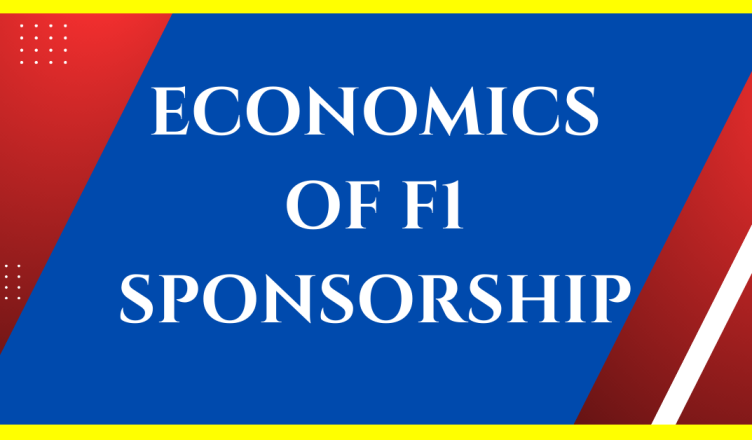Formula 1 (F1) is not only a thrilling global motorsport but also a massive economic powerhouse.
Behind the roar of the engines and the adrenaline-pumping races, sponsorship plays a pivotal role in fueling the success of teams, drivers, and the sport as a whole.
In this in-depth guide, we’ll dive into the fascinating world of F1 sponsorship and explore its economic impact, factors influencing sponsorship deals, revenue generation, return on investment (ROI) analysis, and future trends and challenges.
Buckle up, because we’re about to take you on a high-speed journey through the economics of F1 sponsorship.
The Business of F1 Sponsorship
F1 sponsorship is more than just a logo on a car; it’s a strategic investment that can yield tremendous benefits.
Sponsors provide the financial support necessary for teams to compete, cover operating costs, develop cutting-edge technology, and attract top-tier drivers.
In return, sponsors gain exposure to a massive global audience and the opportunity to align their brand with the excitement, innovation, and prestige of F1.
Sponsorship agreements can range from multi-million dollar primary sponsorships to smaller associate sponsorships that offer targeted brand exposure.
Factors Influencing F1 Sponsorship Deals
Several key factors influence the lucrative sponsorship deals in the F1 world.
-
Team Performance and Reputation
F1 teams with a history of success and consistent performance on the track are more likely to attract high-profile sponsors.
Sponsors are drawn to winners, as they provide enhanced brand visibility and association with excellence in motorsport.
-
Audience Reach and Demographics
F1 boasts a passionate and diverse global fan base, with races broadcasted to millions of viewers worldwide.
Sponsors carefully consider the reach and demographics of the F1 audience to ensure their brand aligns with their target market.
-
Brand Alignment and Marketing Objectives
Sponsors seek partnerships that align with their brand values, target audience, and marketing objectives.
They aim to leverage the F1 platform to enhance brand awareness, engage with fans, and drive sales.
The association with F1 brings prestige, excitement, and a powerful marketing story.
Sponsorship Revenue and Activation
F1 teams rely on multiple revenue streams to sustain their operations and maximize their competitiveness.
-
Sources of Sponsorship Revenue
Primary revenue streams in F1 sponsorship include title sponsors, major partnerships, and technical collaborations.
These partnerships provide significant financial backing and are often reflected in team names, car liveries, and prominent branding.
-
Activation Strategies and Benefits
Sponsorship activation is the process of leveraging the partnership to maximize brand exposure and engagement.
Sponsors activate their partnerships through various means, including prominent logo placement on cars and driver suits, team merchandise, experiential marketing, hospitality events, and digital and social media campaigns.
These activations generate brand visibility, enhance brand loyalty, and create memorable experiences for fans.
Return on Investment (ROI) Analysis
Measuring the ROI of F1 sponsorship is a complex task, but sponsors have various methods to evaluate their investment.
-
Challenges in Measuring ROI
Determining the exact impact of F1 sponsorship on sales or brand perception can be challenging due to multiple variables.
Factors such as market conditions, other marketing efforts, and external events can influence results.
However, sponsors often employ metrics like media value equivalency, brand exposure, social media engagement, and surveys to gauge the effectiveness of their F1 partnerships.
-
Success Stories
Numerous F1 sponsorships have yielded exceptional ROI.
For example, Red Bull’s partnership with Aston Martin, which includes the development of hypercars, has not only generated significant brand exposure but also facilitated the transfer of technology and expertise from F1 to road cars.
Future Trends and Challenges in F1 Sponsorship
As F1 continues to evolve, sponsorship faces new trends and challenges.
-
Emerging Trends
Sustainability and diversity have gained prominence in F1, and sponsors are increasingly seeking partnerships that align with these values.
Additionally, digital and esports platforms offer new avenues for sponsors to engage with fans and tap into emerging markets.
-
Challenges Ahead
Changes in media consumption habits and the impact of business cycles have affected sponsorship budgets and strategies.
Sponsors must adapt to a rapidly changing landscape while ensuring their investments generate meaningful returns.
Conclusion
F1 sponsorship is a dynamic and vital aspect of the sport’s economic ecosystem.
It provides the financial lifeline teams need to compete at the highest level while offering sponsors an unparalleled opportunity for global brand exposure and alignment with the excitement of F1.
As the sport continues to captivate audiences worldwide, the economics of F1 sponsorship will remain a driving force behind the success of teams, drivers, and the sport itself.
In this high-octane world, sponsors and F1 will continue to accelerate together, pushing the boundaries of innovation and exhilarating fans around the globe.
